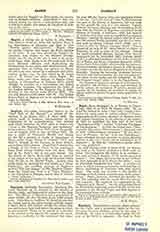

Bagnorea (anciently NOVEMPAGI, BALNEUM REGIUM), Diocese of, is situated in the district of Viterbo, Italy, and immediately subject to the Holy See. The Diocese of Bagnorea has a population of about 20,000; the city contains about 4,500 inhabitants. According to tradition, St. Ansanus preached the Gospel here in the third century, and the church of Santa Maria delle Careeri outside the Alban Gate was said to have been built above the prison in which he was confined. There are no records as to the date of the erection of this diocese; St. Gregory the Great, however, is authority for the statement that about the year 600 the Deacon John was appointed bishop of this see. Up to the time of Urban V, Montefiascone was part of the Diocese of Bagnorea, but was made by this pontiff the seat of a new diocese. Ughelli, without, however, adducing any documentary proof, says that the Diocese of Bagnorea was joined to the Diocese of Viterbo, February 4, 1449, but neglects to mention when they were reestablished as separate dioceses. Among the sacred edifices worthy of note are: the ancient Gothic cathedral and the new cathedral built by Bishop Ulderico Nardi (1698), and restored in 1764 by Bishop Giuseppe Aliuffi. Here is preserved an arm of St. Bonaventure, a citizen of Bagnorea, as well as some of his writings. Among the most celebrated bishops, besides those already mentioned, are St. Aldualdus (861), Corrado Manili (1521), a celebrated professor of law in the Universities of Padua and Pavia, Tommaso Sperandio (1574), Pietro Paolo Febei (1635), who founded the seminary, Martino Cordella, banished to France in 1789 because he would not take the oath of allegiance to the French Republic. During the barbarian invasions, between the sixth and ninth centuries, the city was taken several times by the Goths and the Lombards. In 822 the Emperor Louis I added it to the Papal States.
The Diocese of Bagnorea contains 6 rural deaneries, 24 parishes, 106 churches, chapels, and oratories, 54 secular priests, 45 seminaries, 10 priests, secular and regular, 38 lay brothers, 63 members of female religious orders, 2 schools for girls, and a population of 26,380.
U. BENIGNI

